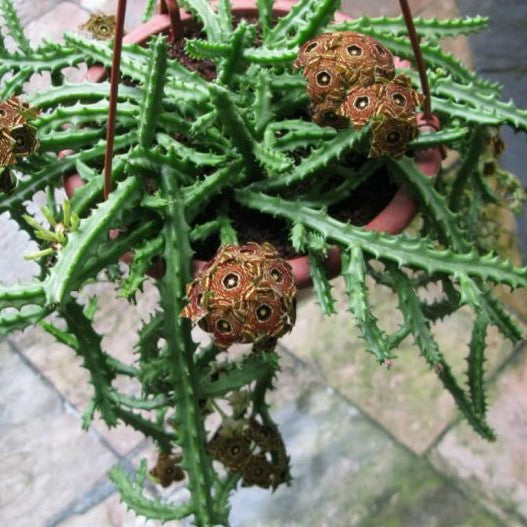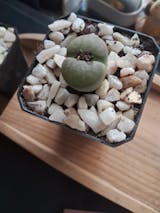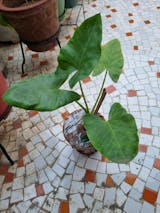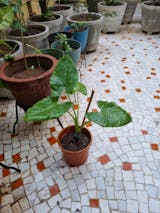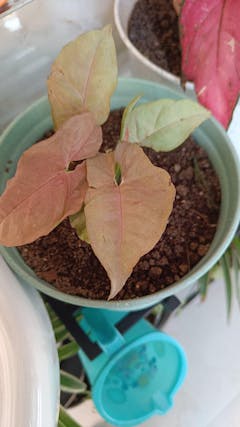Caralluma Crenulata
Family
Asclepiadaceae
Native
Myanmar
Description
Caralluma crenulata is a fleshy, hairless, cactus-like succulent plant with branches numerous, upto 15cm high. Branches are 6 mm thick, not tapering, 4-angled. Flowers are borne at branch end, in tight umbels, 13-flowered. Bracts are 2.5 mm long, linear. Flower stakes are 1.7 cm long. Calyx is divided to the base, sepals 4 mm long, linear, pointed. Flower tube is 6 x 6 mm, bell shaped, limb with triangular velvet petals, exactly pentagonal, 8.5 mm wide at the tip. Flowers are red and yellow striped, variably hairy and upto 1 inch (2.5 cm) in diameter.
Environment
Caralluma are relatively easy to grow. They should be treated as an outdoor plant as they will easily rot indoors and cannot flower without exposure to outdoor temperature fluctuations. They should be grown under cover so that watering can be controlled. The plant require ample amount of sunlight to promote flowering and maintain a well-shaped plant. Very shady positions will produce very poor flowering. Caralluma plants can survive high temperature in summer months so most growth is in spring and autumn, with flowering in autumn when the weather starts to cool down. They all need good drainage.
Landscape Uses
Makes an attractive landscape plant and or container patio plant where some height is needed, being an attractive accent plant, Suited for window sill.

